CF Flange Full Nipple Fittings
Overview
- Full nipple fitting for CF flanges
- One rotatable and one non-rotatable thru hole flange
- 1 1/3 inch to 4 5/8 inch CF flange size
- 304 Stainless Steel construction
Products
Specifications
-
Component TypeFull Nipple Fitting
-
SeriesSeries 88
-
Flange TypeCF Ultra High Vacuum
-
Rotatable FlangesOne
-
Nonrotatable FlangesOne
-
Bolt HolesThru Holes
-
Material304 Stainless Steel
Features
Standard Flange for Ultra High Vacuum Applications
Series 88 is a line of CF-style fittings that are the standard for ultra high vacuum applications. They use a flat gasket placed between two knife edges to provide a vacuum tight seal. Mating flanges have identical profiles, i.e., they are sexless, eliminating the need to store two types or worry about compatibility.
Made with very high purity stainless steel and meticulous cleaning procedures, Series 88 CF components are suitable for use in the ultra high vacuum applications to below 10-13 Torr and in temperatures from -196° to 500°C. The material characteristics of the flanges, seals, screws, and nuts are selected to provide high performance throughout a wide temperature range. Rotatable and nonrotatable flanges in sizes from mini 1-1/3 to 4-5/8 inches (34 to 117 mm) are available with several bore sizes to fit a range of tube diameters.
We use the latest automated equipment to provide the highest quality and consistency. Very high purity type 304 stainless steel is selected to have few inclusions. Combined with our surface treatment and cleaning procedures, this minimizes outgassing, permeability, and leakage. Proper hardness is maintained to prevent the knife edge from deteriorating.
Joining CF Flanges
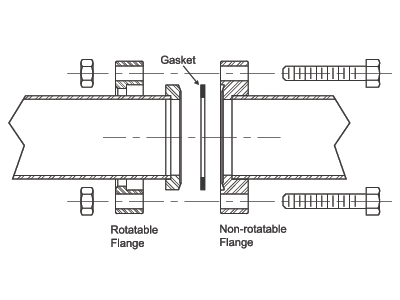
CF components are assembled by inserting a gasket between the two flange faces, then securing the assembly with bolts. (See Figure) Bolts should be tightened diagonally, versus sequentially around the circumference, for a secure vacuum seal. Assembly is cost effective through reuse of components and inch dimensional stubs, sockets, and tubes. The foolproof design provides leak tight joints consistently.
A variety of sealing hardware is available, such as plate nuts, dodecagon (12 point head) bolts, Viton® seals, and individually wrapped copper and silver-plated copper gaskets protected from corrosion and mechanical damage.
Plate nuts furnish the fastest, most convenient method to close flanges, reduce required clearance, assemble with one wrench, and are especially good in limited accessibility. Assembly time reduces greatly, because bolts are easier to start and tighten. The clearance needed is half that of regular nuts. They eliminate the need and cost for tapped flanges
MKS is one of very few CF manufacturers who offer silver plated bolts, including the convenient dodecagon (12 point head) style, which greatly reduce the risk of seizure or breakage.
CF flanges remain leak tight even after repeated cycling of the temperature over a wide range. The availability of both tapped and clearance bolt holes gives great flexibility.
The rotatable versions simplify alignment with the bolt holes of other system components and give infinitely rotatable joints. All fittings have at least one rotatable flange for easy alignment. Nonrotatable flanges provide better knife edge protection. The precise tolerances to which MKS fabricates its CF flanges insure an exact fit every time.
Standard size inch tubing provides easy and economical connection to the user’s equipment. Full and half nipples, adapters to a variety of other connection elements, tees, elbows, crosses, and flexible metal hoses for vibration isolation and movement give the line added versatility.
CF Flange Gasket Options
Copper gaskets make these flanges self-centering and the standard leak grooves simplify troubleshooting and gasket removal. MKS guarantees its CF flanges and fittings to be leak free. OFHC copper gaskets are cleaned, insured to be scratch free, individually sealed, and ready for use. Individual packaging protects flange seal surfaces.
Silver-plated copper gaskets are available for systems that require frequent high-temperature bakeout. This prevents oxides from forming during the bakeout, which could contaminate the system.
The Viton CF gasket offered by MKS has a unique notching in the design, allowing less outgassing than most elastomer seals.
| Flange Size | Gasket OD | Gasket ID | Maximum Torque |
|---|---|---|---|
| 1 1/3 inch | 0.84 in. (21 mm) | 0.64 in. (16 mm) | 5 ft-lb |
| 2 1/8 inch | 1.29 in. (33 mm) | 1.01 in. (26 mm) | 16 ft-lb |
| 2 3/4 inch | 1.90 in. (48 mm) | 1.45 in. (37 mm) | 16 ft-lb |
| 3 3/8 inch | 2.43 in. (62 mm) | 2.01 in. (51 mm) | 26 ft-lb |
| 4 1/2 inch | 3.24 in. (82 mm) | 2.51 in. (64 mm) | 26 ft-lb |
| 4 5/8 inch | 3.60 in. (91 mm) | 3.01 in. (76 mm) | 26 ft-lb |
Applications
Series 88 CF flanges are suitable for applications requiring a very clean environment, ultra high vacuum conditions, high temperature, or where critical or dangerous materials must be contained or excluded. These include:
- Difficult applications with corrosive, radioactive, toxic or air sensitive materials.
- Materials creation and processing such as molecular beam epitaxy.
- Analytical instrumentation including Auger electron spectrometers, mass spectrometers, and electron microscopes.
- High energy physics installation such as accelerators and fusion devices.
Resources
Literature
- Series 88 CF UHV Components & Fittings (399.8 kB, PDF)

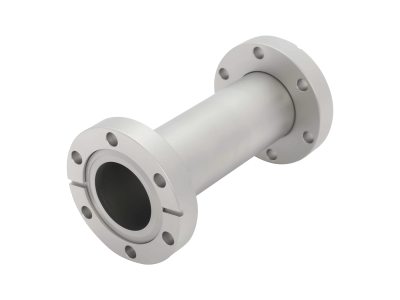
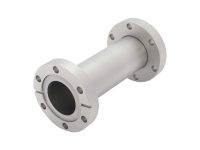

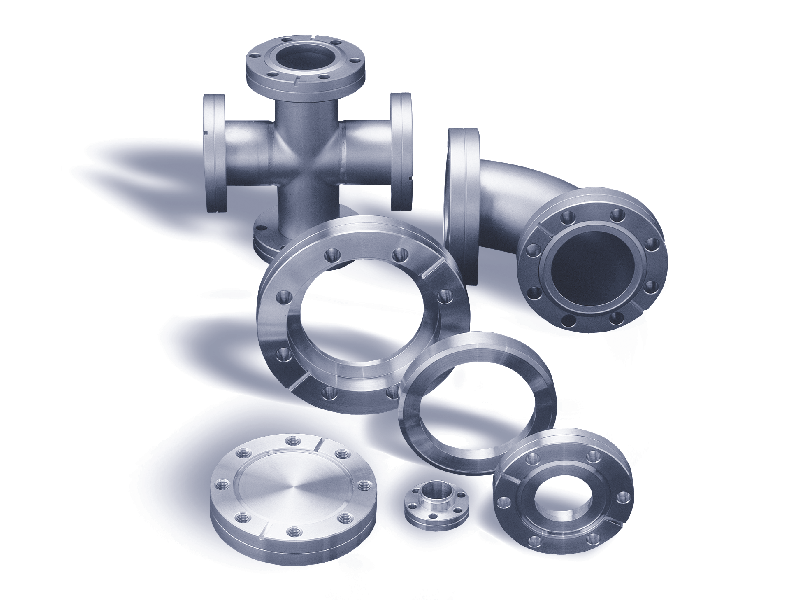
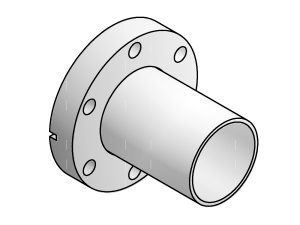

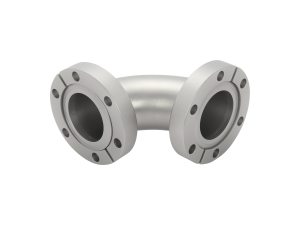
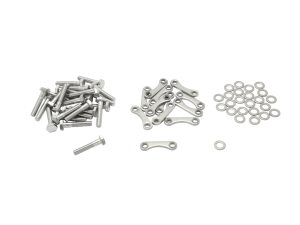

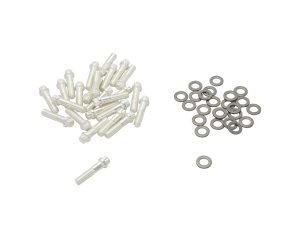
 Ultra-High Velocity
Ultra-High Velocity